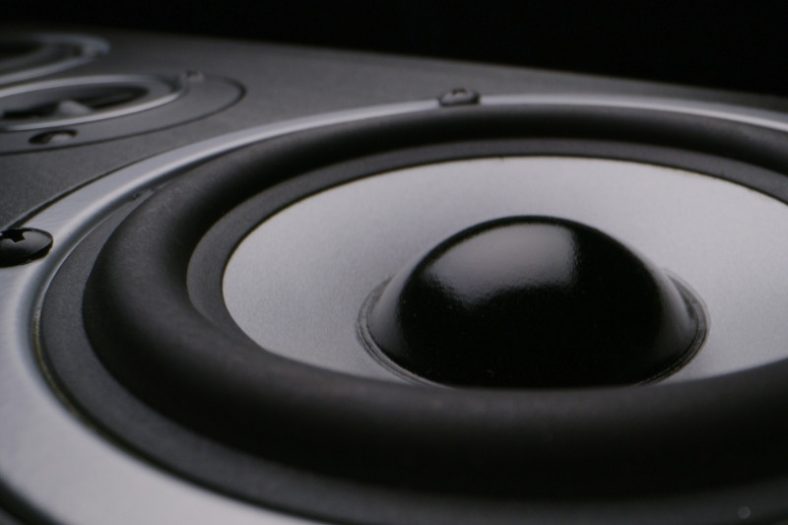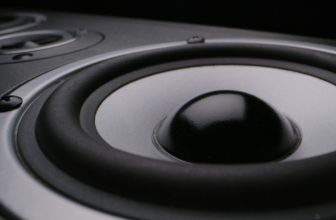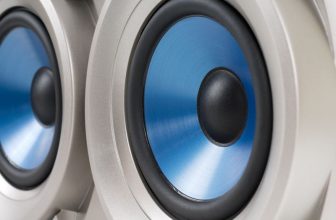Why Does My Subwoofer Make Popping and Cracking Noises?

Subwoofer popping and cracking noises can be caused by problems in the physical structure of the subwoofer, loose input connections, incompatible amplifiers, clipped signals, and a defective power supply. You can fix many of these issues yourself, but you may have to replace some parts.
Subwoofers are most commonly used in cars, home theater, and gaming sound systems, and they’re speakers that reproduce and enhance low frequencies, usually within 20 to 200 Hz. Regular speakers can play these frequencies, but a subwoofer is designed to allow the listener to feel the vibrations produced by powerful bass sounds.
When your subwoofer stops playing any sound or starts making distorted popping, cracking, and thumping noises, that means it needs to be repaired.
In this article, I’ve listed the five most common difficulties that affect subwoofers, as well as a few repairing and maintenance tips.
Contents
Problems in the physical structure of the subwoofer
All speakers vibrate, but subwoofers are specifically constructed to do so. This means that’s fundamental to ensure that all the components in a subwoofer are well-connected and properly screwed together. Loose pieces in the physical structure of the subwoofer will cause unwanted noises and result in damage to the equipment.
What’s the fix?
If you detect any loose pieces in your sub box, you should remove the subwoofer’s surround (the large, cone-shaped piece that vibrates when the subwoofer is on) and analyze every component carefully. Look for unscrewed or dislocated pieces and, if possible, screw or attach them back properly.
Audio input issues (loose connections)
The most common issue affecting home-theater subwoofers is related to the audio-input connection. If your subwoofer is poorly connected, you will experience interferences in sound that result in poor sound quality at best, and no sound at worst.
Not all bad connections in a subwoofer can be found outside the sub-box, but the vast majority is related to poorly connected or damaged RCA cables.
What’s the fix?
Start by checking the RCA cables used to connect the subwoofer to your sound system. If these appear to be damaged, you should replace them with new ones. If everything’s alright with the external cables, you’ll have to take a look inside the sub box and check for loose connections.
Find your way in either by unscrewing the input-output panel in the back or removing the plastic cone and basket at the front. Make sure you don’t mix up the screws in the process.
Inside, you should look for the subwoofer’s internal amp, which is usually attached to the input-output panel. Check the positive/negative wires used to connect the internal amp to the other components and see if either of them is loose or damaged. Reattach or replace the cables if needed.
Incompatible amplifiers
The internal amplifier in your subwoofer can give you trouble now and then, but cracking and popping sounds are most commonly caused by the external amplifier. By external amplifier, I’m referring to the piece of audio equipment you use to route and enhance the sound that goes into the subwoofer.
Assuming the equipment is working properly, and every cable is correctly connected, the one thing you need to worry about is a subwoofer-amplifier power mismatch.
What’s the fix?
First, you need to know how to recognize whether your subwoofer and amplifier are compatible. To do so, look for the RMS information. RMS (Root Mean Square) is the measure of power an amp can output and a speaker (such as a subwoofer) can input (i.e., receive). Ideally, the RMS of your subwoofer and the RMS of your amp should be the same.
If your amp has an RMS value that’s greater than the RMS value of a subwoofer, then it will cause the subwoofer to blow out, as it will input more power than it can handle. This means that your subwoofer will be constantly exposed to overcharged signals that may result in unwanted noises, component deterioration, and even complete loss of audio.
To solve this issue, you will need to either replace your amp or your subwoofer. Sadly, an RMS mismatch isn’t something you can fix with a bit of handiwork. However, you don’t have to worry too much if your amp has an RMS value lower than your subwoofer’s. In this case, you will experience a minor drop in sound quality and loss of audio detail at worst.
Clipped signals
If there’s nothing wrong with the physical components and connection chain of your subwoofer, but you’re still hearing cracking and popping sounds, then you’re probably listening to music that’s too loud. Just like overpowered amplifiers can cause a subwoofer to blow out, so do songs with squared waves that clip.
Audio clipping can cause any sound system to crack and pop. Either due to bad sound quality, poor production, or very low fidelity, some audio tracks will clip and force your subwoofer to work with more than it can deal with.
What’s the fix?
The easy fix is: to avoid listening to music too loud. You should also do your best to ensure your music collection is as high-quality as possible. Avoid downloading poor audio from YouTube and go for high-fidelity digital audio formats such as FLAC and WAV instead of MP3 or MP4—a good audio converter is recommended.
Unfortunately, recurring exposure to clipped audio and overpowered amps can result in permanent damage to the subwoofer’s components. To see if your subwoofer is blown out, you should gently press the subwoofer’s cone; if it moves, then it means it’s working fine. If it’s rigid, then you may need to replace it with a new one.
Defective power supply
A defective power supply can also make your subwoofer crack and pop. Power-supply issues are either caused by defective material or by bad grounding. Incomplete circuits—such as a ground loop—can lead to annoying interferences in any amp and speaker, and subwoofers are no exception.
What’s the fix?
Connect the subwoofer to different AC sockets to see if a particular socket is causing the issue. In case of overall bad grounding, you may have to call a professional.
Maintenance tips for subwoofers
After repairing your subwoofer, it’s time to make sure you don’t have to do it again. While no subwoofer will last forever, there are a few key things you should do to increase the lifespan of your subwoofer.
These are basic maintenance tips for subwoofer owners, but they should be pretty effective in the long run.
Play well EQ-ed songs
When you get a new subwoofer for your car or home-theater system, the temptation is to mess with the EQ settings to enhance those powerful bass frequencies. However, this is not advisable. The EQ is there to prevent potential handicaps in audio equipment; once you have a subwoofer, you should go with the standard settings and, in some cases, even lower the bass frequencies a little.
It’s also important to make sure that you’re listening to well-produced songs. If you’re streaming, playing a record, or listening to a CD, you should be okay. But if you’re listening to a playlist you downloaded for free somewhere on the Internet, use high-fidelity audio file formats only.
Keep your subwoofer clean
Your subwoofer will pick up dust over time, and this can reduce its lifespan. Hygiene is a must for everything and everyone, including your subwoofer. Opening a sub-box can be time-consuming, but it’s worth it. Commit to a few regular clean-ups at least once or twice a year, and your subwoofer will thank you.
Keep your subwoofer dry
Keeping your car sound system dry can be a challenge. For car owners, it’s essential to be extra careful about maintaining the subwoofer as dry as possible. Even the tiniest particle of water inside the sub-box can accelerate component deterioration. The coil—a copper wire placed around a magnet that’s located beneath the subwoofer’s cone—is particularly sensitive to humidity.
Summary
If your subwoofer is making an annoying popping and cracking sound, keep calm: it’s not the end of the world.
Be patient to identify the correct issue, and you should be able to fix it in less than a couple of hours. Some problems, such as bad grounding, are more complicated than others, but you can always rely on your subwoofer’s warranty or ask for the help of a professional if you have to.
Subwoofers are a great piece of equipment to get a party started and truly enjoy the vibrations of those sweet bass frequencies, so make sure you’re having fun—but also treating your subwoofer right!





